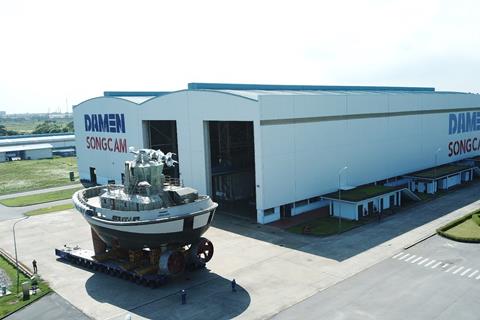The first full-sized, ship-handling electric tug, Sparky, has arrived in New Zealand’s Waitematā Harbour.
Sparky has a 70-tonne bollard pull; the same as the port’s strongest diesel tug, Hauraki. There are 80 battery racks holding 2,240 batteries, totalling 2,784 kWh of power. The tug is powered by the Echandia E-TUG energy storage system (ESS) which is based on the Toshiba SCiBTM LTO cells. For redundancy purposes, the batteries are arranged in strings. If one battery in a string were to fail, the others would simply carry on the work.
Ports of Auckland expects the tug to do up to four shipping moves on a charge of batteries. Recharge time is approximately two hours. Approximately 465 tonnes of CO2 in diesel emissions is expected to be saved annually.
The vessel is the first Damen RSD-E Tug 2513, and it was built at Damen’s Song Cam yard in Vietnam. It has a six-metre draft, is 24.73 in length and has two azimuth thrusters with three-metre diameter propellers.
To ensure absolute safety, Sparky has two 1000kW back-up generator sets which will only be used in cases of emergency or some fault that is not part of business as usual. At most, they are expected to be used once or twice a year.
The expected cost of operating Sparky is less than a third of the cost of running a diesel tug.
Roger Gray, CEO of Ports of Auckland, said: “Sparky is the first e-tug of its type in the world and was a truly innovative project for us. Her arrival marks a big step towards the ports’ decarbonisation of operations and towards our long-term emissions reduction goals.”
There will be approximately six weeks of testing in Auckland before Sparky is fully commissioned and operational. The vessel was named via a public competition and vote in 2020.






